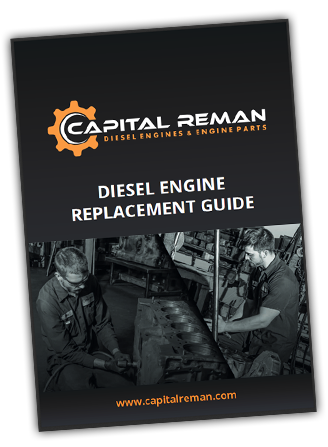EPA Emission Regulations Regarding Remanufactured Diesel Engines
 The Clean Air Act of 1970 was essentially the first major environmental safety and regulatory law in the United States. The law was enforced by the newly created Environmental Protection Agency also created the same year. The Environmental Protection Agency (EPA) was the brainchild of increasing public concern in the 1950s and 1960s regarding the human impact on the environment. Specific incidents such as the 1969 Santa Barbara Oil Spill, the destruction of environmental preserves through the creation of the Federal Highway Interstate System and Rachel Carson’s whistleblowing ecological novel, Silent Spring brought the need for a regulatory agency to oversee environmental issues. For years congress could not come to a discernable solution that would appease both political parties. It was Senator Henry M. Jackson of Washington State that broke the stalemate when he wrote Bill 1075 which evolved into the National Environmental Policy Act of 1969. This was the first of many laws regarding clean air, water and wilderness protection. It was Richard Nixon in 1970 that created the EPA under the guise of having one agency that oversaw and enforced all environmental issues.
The Clean Air Act of 1970 was essentially the first major environmental safety and regulatory law in the United States. The law was enforced by the newly created Environmental Protection Agency also created the same year. The Environmental Protection Agency (EPA) was the brainchild of increasing public concern in the 1950s and 1960s regarding the human impact on the environment. Specific incidents such as the 1969 Santa Barbara Oil Spill, the destruction of environmental preserves through the creation of the Federal Highway Interstate System and Rachel Carson’s whistleblowing ecological novel, Silent Spring brought the need for a regulatory agency to oversee environmental issues. For years congress could not come to a discernable solution that would appease both political parties. It was Senator Henry M. Jackson of Washington State that broke the stalemate when he wrote Bill 1075 which evolved into the National Environmental Policy Act of 1969. This was the first of many laws regarding clean air, water and wilderness protection. It was Richard Nixon in 1970 that created the EPA under the guise of having one agency that oversaw and enforced all environmental issues.
As the role of the EPA grew in the 1980s and 1990s many new conservational concerns entered public conscience. One such pollutant was found to be diesel engines. In 1994 the major diesel manufacturers including Caterpillar, Cummins, Detroit Diesel and Mack among others collaborated to discover new ways to reduce emissions in diesel engine technology know as the 'Tier Program'. First analyzed by the California Air Research Board in collaboration with a government study found that diesel engine emissions were a major contributor to poor air quality in the United States. It was discovered that Carbon Monoxide, Nitrogen Oxide, Hydrocarbons and other particulate matter were being produced at an alarming rate by older less efficient remanufactured diesel engines. Many remanufactured diesel engines were not in compliance with the Clean Air Act. The Tier Program, first implemented in 1996, is based on gradual reductions in emissions created upon a ‘tiered approach’ over a period of 20 years. The plan is designed upon 4 tiers (1-4) according to the size and original use of the engine. The original restrictions mostly applied to over-the-road diesel vehicles but expanded in 2006 to include stationary diesel engines in machinery and generators.
The infograph below describes how the Tier Program works over the period of years starting in 1994. Beginning in 1994 to 2006 Tier 1 engine conversions solely focused on on-road and off-road diesel vehicles. Tier 2 and 3 emission reductions began in 2006 started to phase out older technology in standby remanufactured diesel engines. Prior to 2007 remanufactured diesel engines and generators were regulated by state and local laws most revolving around the number of hours an engine ran per year. Regulations were typically only imposed on prime or continuous use engines vs. small infrequent stand-by engine usage applications. Manufacturers were then forced to come up with emission reductions in all diesel engines produced that are at least Tier 2 and Tier 3 compliant beginning at the start of 2007. Previous emission regulations for diesel generator sets were handled by individual state and local authorities. Most of these regulations were based on the number of hours the diesel generator was operated in during a year. Less stringent regulations were imposed on standby diesel generators, whose usage is infrequent and typically for short periods of time, with the restrictions increasing for generators that operated more regularly as a prime power source or in times of peak energy demand.
Tier 2 and Tier 3 standards were met through in an improvement in technology in remanufactured diesel engines. Changes in diesel fuel refinement as well as how the engine is designed improved emission regulations tremendously. These improvement were first met with hesitation by diesel manufacturers but ultimately was not much of a major issue from a sales or production perspective as originally thought. Guidelines were met by reducing the amount of sulfur content in diesel fuel, installing electronic engine control units (ECUs) into the engines to regulate fuel efficiency via the injectors as well other internal modifications. The final phase (Tier 4), which is still underway, is less evasive for manufacturers and primarily focuses on after-exhaust filters and treatments that may be used to further reduce and breakdown harmful particulates. Older remanufactured diesel engines already in operation were not subjected to the Tier Program Regulations and are essentially “grandfathered in”. The good news is that many older remanufactured diesel engines can be updated with newer technology to make them more fuel efficient and less of a pollutant.




